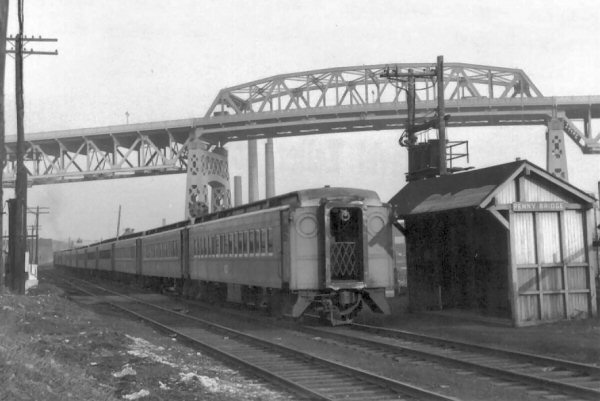I think that the automatic speed control equipment installed beginning in 1951 was off-the-shelf US&S stuff. It was definitely pretty sophisticated stuff since it did not simply stop a train like automatic train stop systems. They (and the PRR, of course) had simple unenforced cab signals going back to at least the 1930s. Correct me if I'm wrong but, cab signal rules were in effect on the Main Line west of Jamaica for many years before the wreck. If the engineer chose not to obey the cab signal aspects, well.......
Don't forget that the LIRR also had automatic train stops (trippers) on the Atlantic Branch west of Jamaica and at all drawbridges in electrified territory. The automatic train stops on the Atlantic Branch from East New York to Jamaica were removed from service on Jan 31, 1970. The trains stops between Flatbush Ave and East New York were removed from service on April 4, 1970.
Automatic train stops were in service at the protecting home signals at each end of the gauntlet track at Rockville Centre from the beginning on April 19, 1949. There was a very small section of actual single track between the east end of the gauntlet and the west end of the temporary Rockville Centre station (which had been relocated east of its former location). The single track and gauntlet were completely traffic-locked. After the wreck, however, automatic train stops were added to the last automatic block signals BEFORE the interlocking and two of the automatic block signals AFTER the interlocking on February 26, 1950. Not only that but, the eastward automatic block signal east of Lynbrook (S176) had its number plate removed and the "stop and proceed" aspect replaced with "stop signal" (a la home signals) so eastward trains that did not have a route established at Centre Interlocking would be held WAAAAAAY back, west of Rocklyn Ave! After this wreck, one couldn't be too safe.
Whew! Was this way too much information or what?!
Yes, Dave, this is why this kind of stuff needs to be published and made available to everyone. BTW, this is exactly the kind of super-detailed info I have accumulated through the years courtesy of Bob Emery and Art Huneke.
